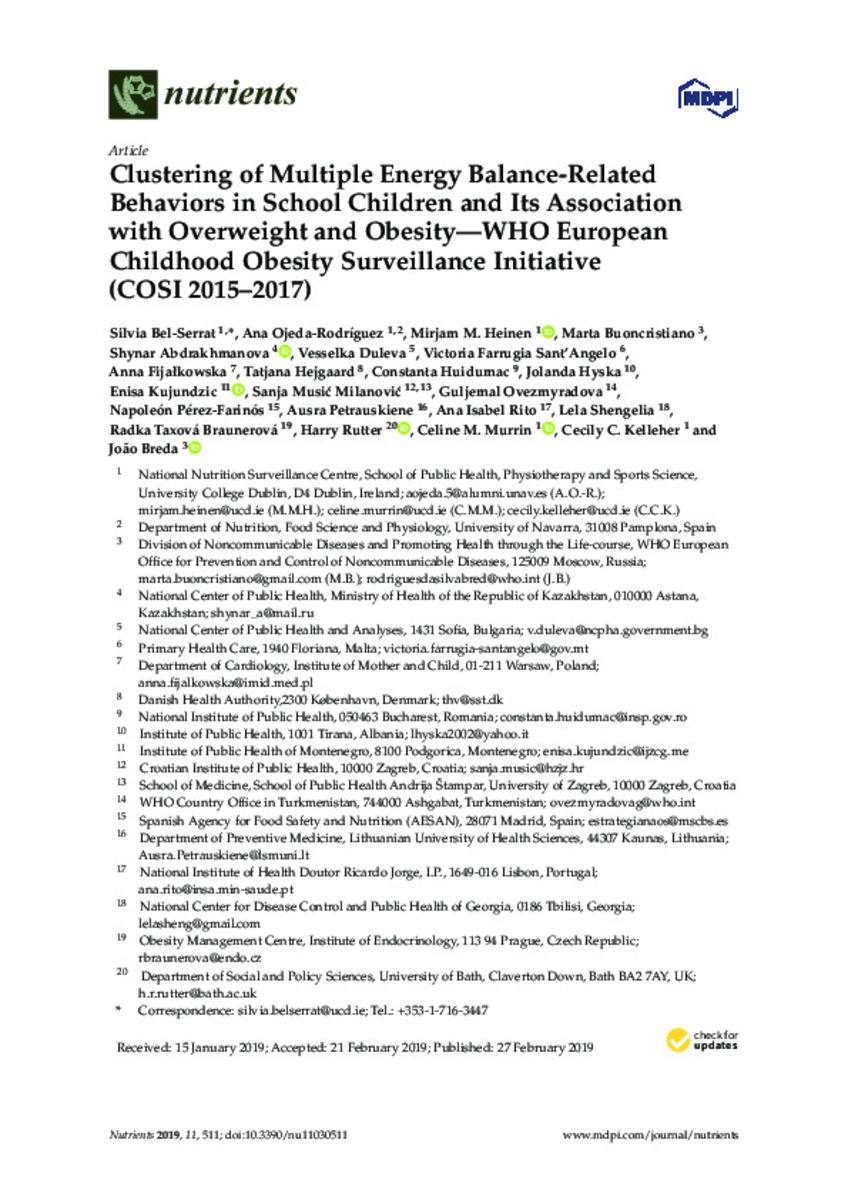Clustering of Multiple Energy Balance-Related Behaviors in School Children and Its Association with Overweight and Obesity—WHO European Childhood Obesity Surveillance Initiative (COSI 2015–2017)
Keywords:
Materias Investigacion::Ciencias de la Salud::Nutrición y dietética
Children
Cluster analysis
Dietary intake
Energy balance-related behaviors
Obesity
Overweight
Physical activity
Screen time
Sedentary behavior
Note:
This article is an open access article distributed under the terms and conditions of the Creative Commons Attribution (CC BY) license (http://creativecommons.org/licenses/by/4.0/).
Citation:
Bel-Serrat, S. (Silvia); Ojeda-Rodríguez, A. (Ana); Heinen, M.M. (Mirjam M.); et al. "Clustering of Multiple Energy Balance-Related Behaviors in School Children and Its Association with Overweight and Obesity—WHO European Childhood Obesity Surveillance Initiative (COSI 2015–2017)". Nutrients. 11 (511), 2019, 1 - 20
Statistics and impact
0 citas en

Items in Dadun are protected by copyright, with all rights reserved, unless otherwise indicated.








